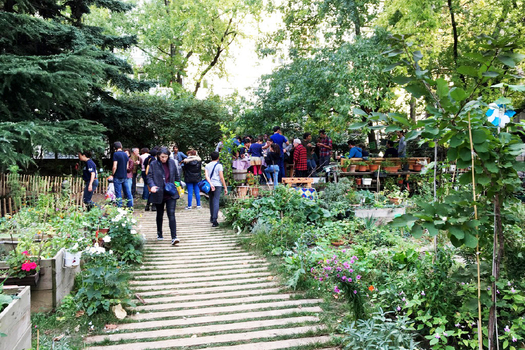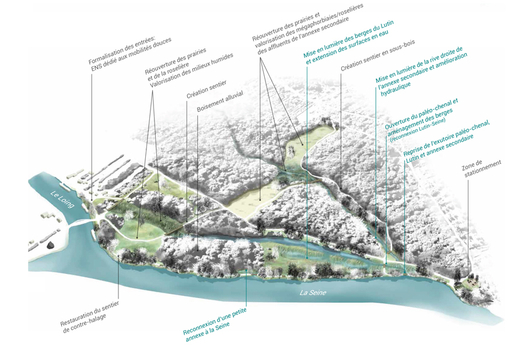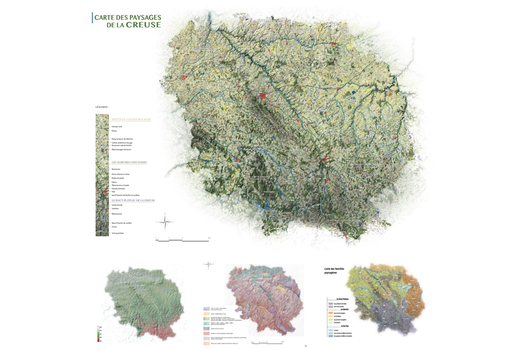Mutual Valleys
Niort (FR) - Winner

Omrane Toumi, Mélissandre Phan and François Perraud
TEAM DATA
Associates: Mélissandre Phan (FR), Omrane Toumi (FR) – landscapers, François Perraud (FR) – architect
atelier -kosmes
5 rue de la Procession,
Saint-Maur-des-Fossés, France
+33 9 88 03 41 14
contact@atelierkosmes.com / www.atelierkosmes.com
See the complete listing of portraits here
See the site here
TEAM PORTRAIT
VIDEO (by the team)
INTERVIEW
Click on the images to enlarge
1. How did you form the team for the competition?
Atelier -kosmes is a landscape architecture studio founded by Toumi Omrane and Melissandre Phan, both landscape architects DPLG. The studio develops a attentive approach, leaning on the relationships weaved between the living and its geographic, natural and anthropic space, to develop resilient planning processes binded with the specificities of each territory.
François Perraud is an architect working in a landscape architecture studio. Is professional path leads him to consider a landscape approach as indissociable from a contemporary approach of spatial conception, the physical charasteristics of a site leading to the project.
We met during our formation at the École Nationale Supérieure du Paysage de Versailles, and, since then, started to co-create a pluridisciplinary approach of project ecology.
The « Living Cities » subject of this Europan edition has been an opportunity to get together in order to develop and increase a prospective reflexion at a territorial scale.
2. How do you define the main issue of your project, and how did you answer on this session main topic, Living cities?
Faced with the issues of climate change acceleration, biodiversity loss and their impact on urban areas viability, we carry the idea that to regain living cities requires a deconstruction of the anthropocentric vision of territories planning in order to consider them through their ecological functions, supporting local specificities (geographical, hydrological, pedological…).
These climatic phenomenons, amplified by anthropic action, are often seen through the notion of risk (floods, floods, droughts…). A paradigm change is then necessary to make them the means of spontaneous resilience. The resulting geographical structures carry regenerative dynamics as much as ecological, economical, social and sensitive, in contact with which urban areas have to transform to become viables.
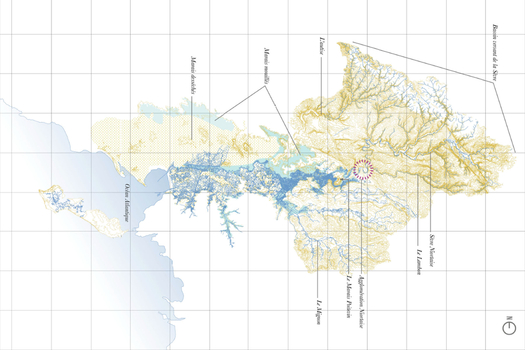
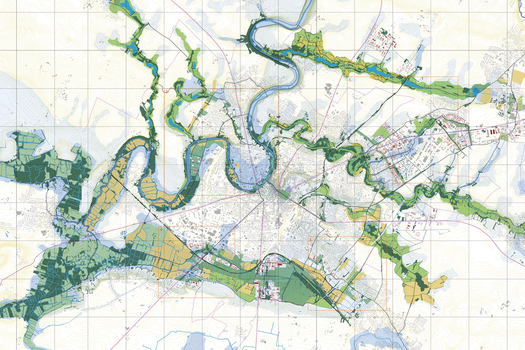
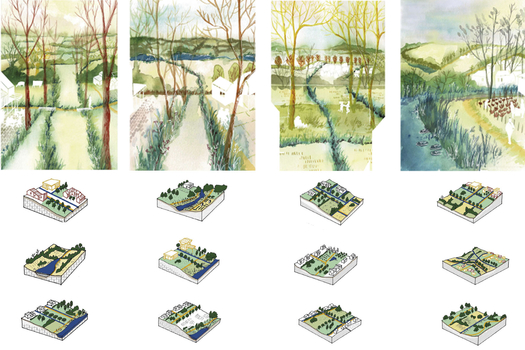
Niort Agglomération is settled at a structural point of the Sèvre Niortaise catchment area : at the jonction in between the Sèvre river tributaries upstream and the wet marsh of the Marais Poitevin downstream. This geographical localisation, historically allowing the exploitation of the Poitevin marsh natural resources, associated with a context of climatic change and anthropic degradations, paradoxaly threaten Niort Agglomeration territory with increasing drought in the Northern plains and valleys, by the declining of its aquifer, whilst floods by flooding of the Sevre and Lambon rivers and resurgences from the aquifer superior are a threat down south. Niort urban morphology homogenises and develops in a systematic manner along radial axes. It then no longer cares for the necessary natural permeability of the territory in order to face drought and flooding events to come.
This involves a recontextualization of the initial problematics of soft mobility development, the emergence of a Poitevine identity, the restructuration of economic activity zones and agricultural wastelands of peripherical cities of Niort , relative to a ground and living hydrography.
We identified that one of the components that has been neglected in the recent development of the city are valleys of the territory.
The project purpose is to consider Niort agglomeration valleys as alternatives planning and regeneration structural axes for a living city. Doing so by planning alongside those axes flood extension areas in order to fertilize the soil, natural retention beds to constitute water reservoirs. Biodiversity corridors are created or protected and reinforced, as well as cool aereas. Such spaces allow us to establish slow mobility axes, and secure living soil in an imbrication of vegetalized public spaces and local economy oriented spaces, through the implantation of productive system experimentation site.
This living framework counterbalances the radial pattern of the Niortaise agglomeration, around which the peripheral communes are restructured according to their geographical, geological and hydrographic characteristics.
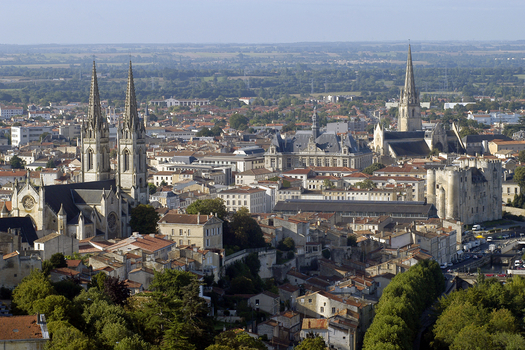
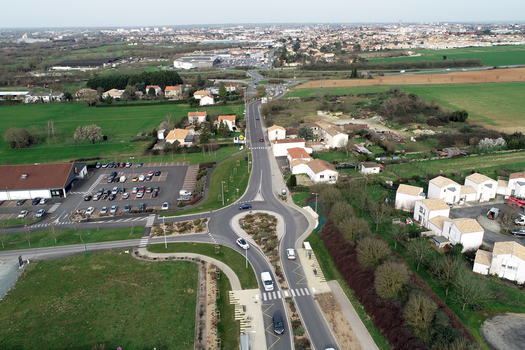
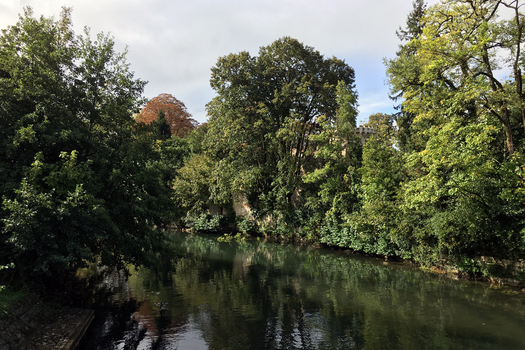
The approach through landscape architecture of territorial planning allows us nowdays to reflect on a new balance with the living. Think back on its place and new forms of interactions with our living spaces is at the center of our practice and approach. We adress this through different scales, whether through desimpermeabilisation and vegetalisation of school ground projects, Espaces Naturels Sensibles planning and renaturation, or studies on the revitalisation of city centers in regions such as Creuse.
The works of Gilles Clément, Baptiste Morizot or Francis Hallé are fructuous sources of reflexion, but this « reference-philosophy » emerges from the sites themselves. Here, to make this territorial frame come forward, we found inspiration in the hydrological and sedimentary structures of the Marais Poitevin, Niort historical implantation and its relation with natural territorial ressources, the story of the insurances (mutuelle in french) Capital which shape a local economy, in order to make it a capital of mutualisations.
5. Urban-architectural projects like the ones in Europan can only be implemented together with the actors through a negotiated process and in time. How did you consider this issue in your project?
The regeneration of such a structure of resilience, at Niort agglomeration scale, requires the creation of a collective set of mobilisation, reflexion, debate, planification and action, regrouping both public and private actors of the territory.
To this purpose, we propose the creation of a Planning Plan Guide of the valleys of Niort Territory, allowing to develop a plurianual cooperative planning tool, in which will be build a vision, objectives and a shared and mutualised gestion of this new salvating structure.
6. Is it the first time you have been awarded a prize at Europan? How could this help you in your professional career?
It is indeed the first time that our team won a Europan award. This edition allowed to develop a prospective approach of the living at the scale of a vast urban and agricultural territory, by such enriching our approach for futur operational projects.
TEAM IDENTITY
Office: Atelier -kosmes - Saint-Maur-des-Fossés (FR)
Function: Landscape, Architecture
Average age of the associates: 29 years old
Has your team, together or separately, already conceived or implemented some projects and/or won any competition? If yes, which ones?
Atelier -kosmes exert as council and prime contractor in the planning of urban , rural and natural spaces. We currently work and have been working on projects having as common denominators the place of the living, as such as:
- The co-programmation for the desimpermeabilisation, vegetalisation and planning of the schools of Val de Marne with the CAUE of 94
- Studies and prime contracting as representative for the planning and interpretation of Espaces Naturels Sensibles fot the departemental council of Seine et Marne (77)
- The participative planning of a shared garden in Paris 12th district, « re-employment » award.
- The elaboration of a redinamisation plan with the Departemental Direction of Creuse Territories, comissioned by the Ministry of Ecology and Solidarities.
As an independant, François Perraud was a winner of the competition for the rehabilitation of Porto’s marina square, in Ota, Corsica, on a Unesco Site.
